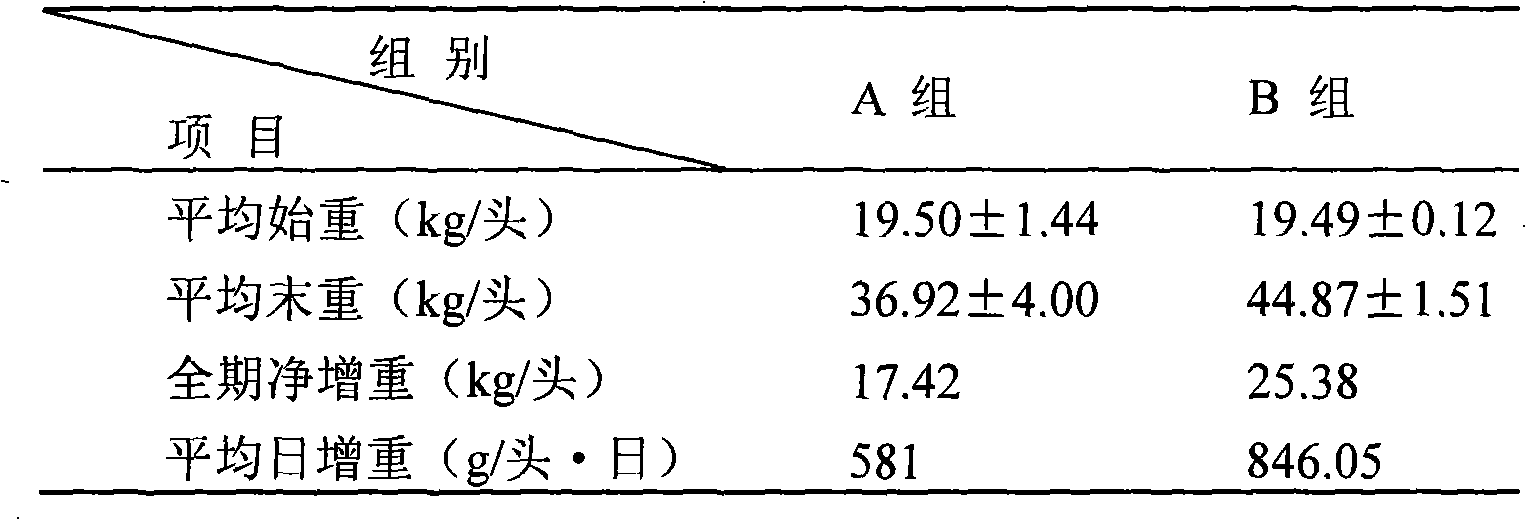Novel microbial feed additive and method of producing the same
A microbial feed and additive technology, applied in animal feed, animal feed, bacteria, etc., can solve the problem of high cost, achieve the effect of increasing lean meat rate, improving feed remuneration, and improving the quality of meat products
- Summary
- Abstract
- Description
- Claims
- Application Information
AI Technical Summary
Problems solved by technology
Method used
Image
Examples
Embodiment 1
[0023] The detection method of conjugated linoleic acid in the fermentation broth of Lactobacillus plantarum and Enterococcus faecalis is as follows:
[0024] 1) Liquid activation: Lactobacillus plantarum and Enterococcus faecalis were respectively inoculated in MRS liquid medium, and cultured statically at 37°C for 20 hours to make it in the mid-to-late logarithmic period; the MRS liquid medium (g / L): glucose 20; tryptone 10; beef extract 10; yeast extract 5; diammonium citrate 2; dipotassium hydrogen phosphate 2; MgSO 4 ·7H 2 O 0.58; MnSO 4 4H 2 O 0.25; Tween 801 mL.
[0025] Preparation method: MgSO 4 ·7H 2 O, MnSO 4 4H 2 O, dissolve the components other than glucose and Tween 80, cool to 50°C, adjust the pH value to 6.0-6.5 with acetic acid, and then add MgSO 4 ·7H 2 O, MnSO 4 4H 2 O, add glucose and Tween 80 at the end. Autoclave at 121°C for 20 minutes.
[0026] 2) Liquid fermentation and the measurement of conjugated linoleic acid: inoculate the seed solution...
Embodiment 2
[0028] Use a 50L fermenter to carry out liquid submerged high-density fermentation of Lactobacillus plantarum and Enterococcus faecalis, the steps are as follows:
[0029] 1) slant activation: Lactobacillus plantarum and Enterococcus faecalis strains were respectively transferred to eggplant bottle slant medium, and cultured at 37°C for 20h to make it in the late logarithmic period; the slant medium was MRS (g / L): glucose 20; tryptone 10; beef extract 10; yeast extract 5; diammonium citrate 2; dipotassium hydrogen phosphate 2; MgS0 4 ·7H 2 O 0.58; MnSO 4 4H 2 O0.25; Tween 801mL; agar 20.
[0030] Preparation method: MgSO 4 ·7H 2 O, MnSO 4 4H 2 O, dissolve the components other than glucose and Tween 80, cool to 50°C, adjust the pH value to 6.0-6.5 with acetic acid, and then add MgSO 4 ·7H 2 O, MnSO 4 4H 2 O, add glucose and Tween 80 at the end. Autoclave at 121°C for 20 minutes.
[0031] 2) Preparation of bacterial suspension: The seeds cultivated to the mid-to-la...
Embodiment 3
[0034] Post-treatment was carried out by spray drying. Centrifuge and concentrate the fermented liquid that has passed the inspection, and the obtained bacteria are used as the core material, sodium alginate is used as the wall material, Tween-80 and Span-80 are used as emulsifiers, the emulsifier dosage is 1%, and the homogeneous pressure is 30MPa , the feed temperature is 20°C; the inlet temperature is 110°C, and the outlet temperature is 45°C. Finally, the quality inspection is carried out, and after passing the test, it is packaged and put into storage.
PUM
 Login to View More
Login to View More Abstract
Description
Claims
Application Information
 Login to View More
Login to View More - R&D
- Intellectual Property
- Life Sciences
- Materials
- Tech Scout
- Unparalleled Data Quality
- Higher Quality Content
- 60% Fewer Hallucinations
Browse by: Latest US Patents, China's latest patents, Technical Efficacy Thesaurus, Application Domain, Technology Topic, Popular Technical Reports.
© 2025 PatSnap. All rights reserved.Legal|Privacy policy|Modern Slavery Act Transparency Statement|Sitemap|About US| Contact US: help@patsnap.com



